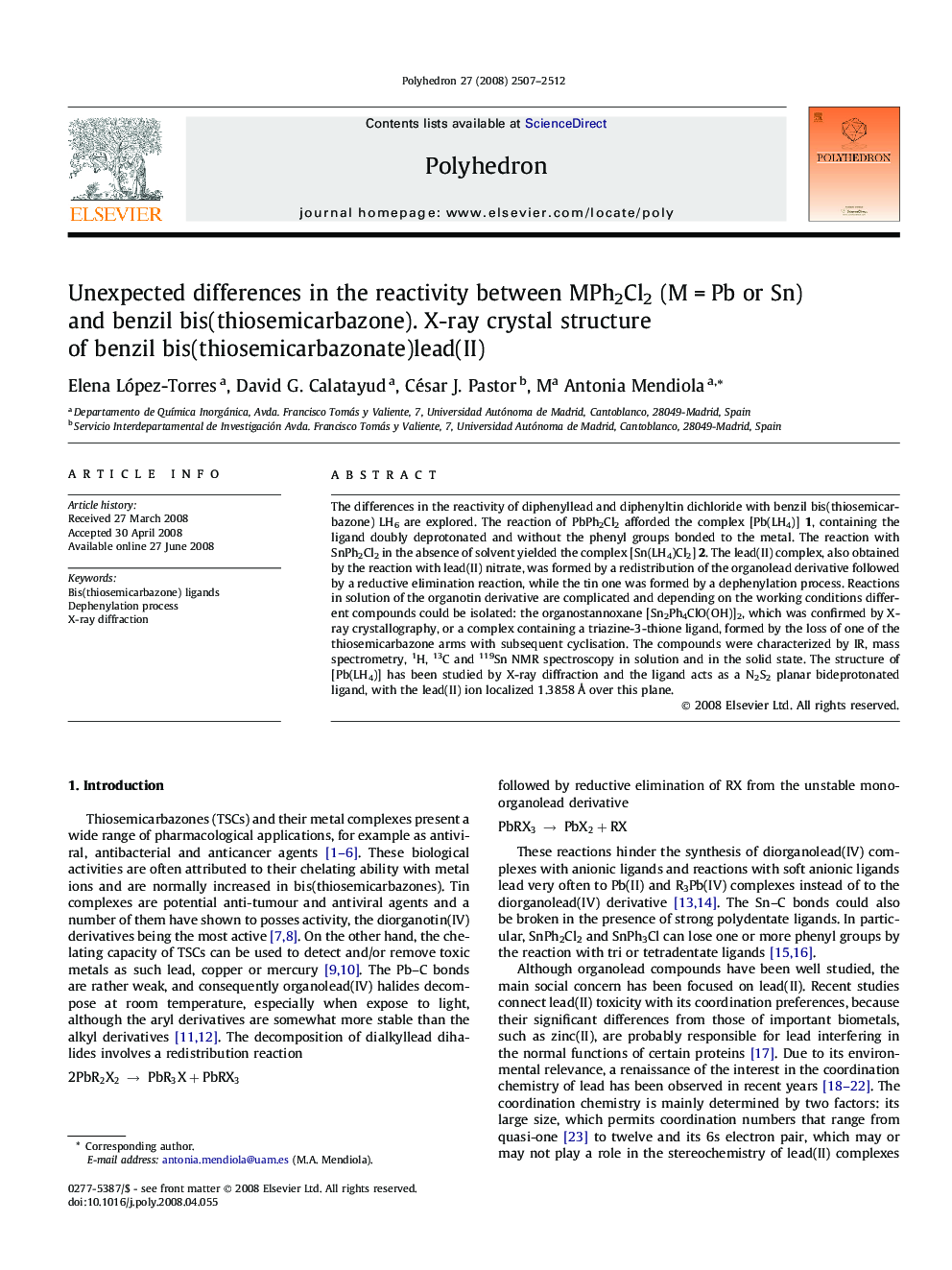| Article ID | Journal | Published Year | Pages | File Type |
|---|---|---|---|---|
| 1339248 | Polyhedron | 2008 | 6 Pages |
Abstract
The differences in the reactivity of diphenyllead and diphenyltin dichloride with benzil bis(thiosemicarbazone) LH6 are explored. The reaction of PbPh2Cl2 afforded the complex [Pb(LH4)] 1. The reaction with SnPh2Cl2 in the absence of solvent yielded the complex [Sn(LH4)Cl2] 2. The lead(II) complex, also obtained by the reaction with lead(II) nitrate, was formed by a redistribution of the organolead derivative followed by a reductive elimination reaction, while the tin one was formed by a dephenylation process. Reactions in solution of the organotin derivative are complicated and depending on the working conditions other compounds could be isolated: the organostannoxane [Sn2Ph4ClO(OH)]2, or [SnPh2(C15H10N3S)Cl], was formed by the loss of one thiosemicarbazone arm with a subsequent cyclisation.
Keywords
Related Topics
Physical Sciences and Engineering
Chemistry
Inorganic Chemistry
Authors
Elena López-Torres, David G. Calatayud, César J. Pastor, Ma Antonia Mendiola,
